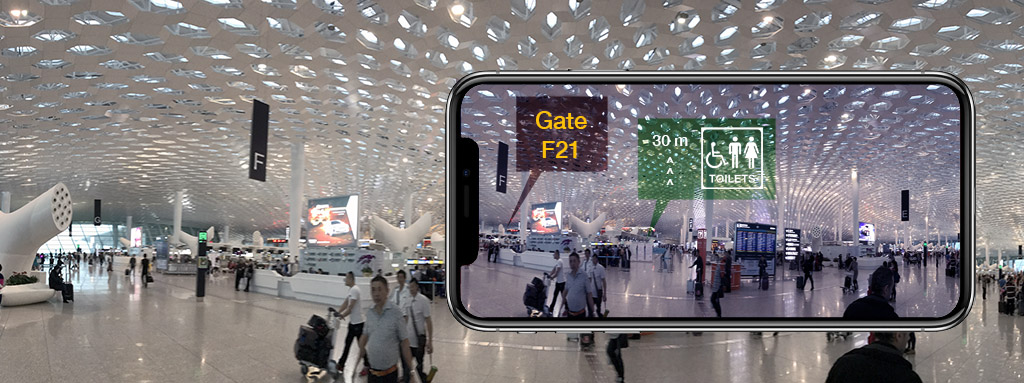Improving passenger experience should be the main objective of all stakeholders involved in air transport. To this end, new methods are being developed to help reduce passenger processing times at airports through the use of biometric technology, Risk-Based Screening, cybersecurity, big data and augmented reality.
Few technologies can contribute more to improving the customised experience of each passenger as they move through the airport.
Perhaps one’s first thought when talking about augmented reality involves an image of glasses. These are very useful in a professional environment, but they are undoubtedly still very far away from being used by passengers.
For technology to penetrate into everyday life it must be easy to use, cheap and easy to replicate. Therefore, the application of augmented reality linked to smartphones presents itself as a very viable solution.
In the same way that millions of people have hunted for Pokémon with their phones: why not hunt for offers at the airport?
Improving passenger experience involves designing a customised experience for each of the millions of people who fly each year. To do this, thanks to augmented reality we could have a ground service agent on each passenger’s mobile phone, who will guide us through the airport to the different areas of the terminal according to our individual preferences.
Thus, after indicating our flight number, it will calculate the amount of time we have available to enjoy the entertainment offered by the airport. It will indicate, for example, the types of food we want and the range of prices, and thanks to the augmented reality on our mobile phone, will point us to the right corridor and guide us with arrows leading us to the recommended restaurants. In addition, we will be able to obtain additional information about the restaurants, including menus, 3D images of dishes, etc.
Likewise, in the case of the commercial offering, we will receive information about offers, discounts, etc.
Depending on our position in the terminal, the boarding time and the distance to the assigned boarding gate, we will receive the appropriate notification at the right time, letting us know that we need to go to the boarding gate, as well as customised assistance on how to get there.
The use of augmented reality inside the terminal aims to improve passenger experience, while its use outside the terminal is ideal for facilitating the operation of aircraft handling.
For example, Singapore Airport already performs aircraft ramp and baggage tracking tasks with the aid of augmented reality technology, which makes it possible to increase safety and reduce aircraft handling times.
The use of this technology means a reduction in aircraft turnover times, resulting in a threefold benefit: for the airline, by increasing the aircraft’s hours of use; for the airport, by reducing capacity problems on the platform; and for the passenger, by reducing the probability of delays.



